
The geographical and historical influences that inform Portuguese cuisine set it apart from the food traditions of its Spanish neighbors. Staple foods from North and South America, China, Japan and Africa obtained during explorations in the 15th and 16th centuries combine with native foods to create a flavorful, interesting Portuguese diet.
Staple Ingredients
The corn, tomatoes, chilies and peppers used frequently in Portuguese cuisine originated in North and South America. Baalhau, or salt cod, dries in racks in localities along the Portuguese coasts. Portugal uses rice more than other European countries, according to the Epicurious website, and couscous, a fine pasta, is a common ingredient from its Moroccan neighbors to the south.
Meat
Porco preto, or black pig, from the southern region Alentejo, is succulent and sweet, because the black pigs graze on fallen acorns. Chourico and linguica are cured smoked sausages seasoned with red pepper, garlic, herbs and wine. Morcela is blood sausage, a popular dish that may be the Portuguese answer to surf and turf -- pork and clams.
Cheese and Eggs
The cheese in Portugal is often made with sheep's or goat's milk. Quiejo fresco is a commonly used mild soft, creamy cheese. San Jorge is a cheese similar to cheddar from Azores, an Archipelago off the western coast. The Portuguese revere the egg; it may be their most heavily used ingredient. Fried and placed on top of meats and yolks in custards, the Portuguese use eggs in almost every course.
Dessert and Wine
Arroz doce is rice pudding with cinnamon. Custards are common. Flan is a custard with caramel added. Port is perhaps the most popular Portuguese wine. It originated in Oporto, a city in the north. An estimated 40 varieties of grapes, according to Frommers, and up to 50 years of aging form the complex flavor of port. The types range from white to full-bodied reds. Often consumed after meals, ports are paired with cheese and fruit.
Related Articles

African Food Facts

Types of Portuguese Sausage
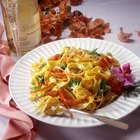
Facts About Italian Cuisine

Uses of Saltpeter in Food

Bohemian Cooking
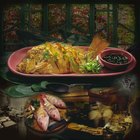
How to Cook a Whole Fish Jamaican Style

Description of Spanish Foods
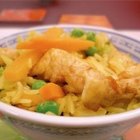
Types of Asian Food

Italian Cuisine Characteristics

How to Make Schmaltz Herring
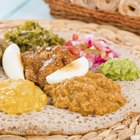
Nutritional Information for Ethiopian ...
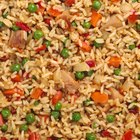
How to Cook Arroz Chaufa
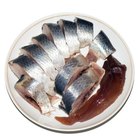
Herring in Wine Sauce

Nutritional Information for Johnny's ...

List of Cuban Foods
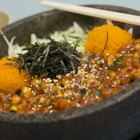
Korean Food Nutritional Value
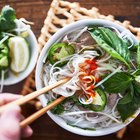
Vietnamese Diet

Proper Handling and Storage of Rice

How to Cook Silver Fish Filipino Style

How to Cook Red Camargue Rice
References
Writer Bio
Based in Richmond, Va., Tara Carson has written articles for editorial and corporate online and print publications for more than 10 years. She has experience as an adjunct professor of nutrition at Northwest Christian University and holds a Bachelor of Science in journalism and nutrition from Virginia Commonwealth University.
Photo Credits
portugal image by caironbohemio from Fotolia.com